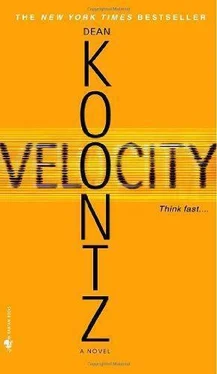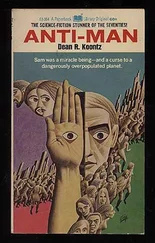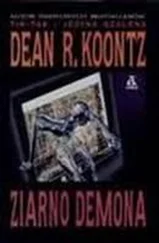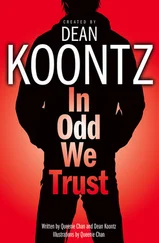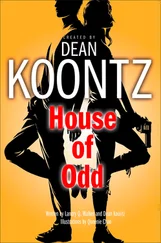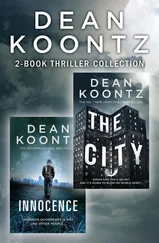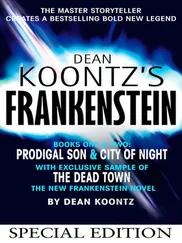Dean Koontz - Velocity
Здесь есть возможность читать онлайн «Dean Koontz - Velocity» — ознакомительный отрывок электронной книги совершенно бесплатно, а после прочтения отрывка купить полную версию. В некоторых случаях можно слушать аудио, скачать через торрент в формате fb2 и присутствует краткое содержание. Жанр: Триллер, на английском языке. Описание произведения, (предисловие) а так же отзывы посетителей доступны на портале библиотеки ЛибКат.
- Название:Velocity
- Автор:
- Жанр:
- Год:неизвестен
- ISBN:нет данных
- Рейтинг книги:5 / 5. Голосов: 1
-
Избранное:Добавить в избранное
- Отзывы:
-
Ваша оценка:
- 100
- 1
- 2
- 3
- 4
- 5
Velocity: краткое содержание, описание и аннотация
Предлагаем к чтению аннотацию, описание, краткое содержание или предисловие (зависит от того, что написал сам автор книги «Velocity»). Если вы не нашли необходимую информацию о книге — напишите в комментариях, мы постараемся отыскать её.
Velocity — читать онлайн ознакомительный отрывок
Ниже представлен текст книги, разбитый по страницам. Система сохранения места последней прочитанной страницы, позволяет с удобством читать онлайн бесплатно книгу «Velocity», без необходимости каждый раз заново искать на чём Вы остановились. Поставьте закладку, и сможете в любой момент перейти на страницу, на которой закончили чтение.
Интервал:
Закладка:
“Special my ass,” said Arvin.
“Honey,” Jasmine told him, “no offense, but your dumpy backside doesn’t look so special to me.”
“What he calls himself,” Curly said, “is a performance artist.”
“What’s that mean?”
“What I take it to mean,” Curly said, “is art that doesn’t last. It’s made to do something, and when it does something, it’s over.”
“What are museums gonna be filled with in a hundred years?” You wondered. “Empty space?”
“There won’t be museums anymore,” Jasmine said. “Museums are for people. There won’t be any people. Just humanized pigs.”
Billy had grown very still. He sat with the coffee cup to his lips, his mouth open, but unable to take a drink.
“Honey, something wrong with the brew?” Jasmine asked.
“No. No, it’s fine. In fact, I’d like another cup. Do you serve it in mugs?”
“We have a triple cup in a plastic container. We call it the Big Shot.”
“Give me one of those,” Billy said.
269
Chapter 68
An alcove off the diner served as an internet cafe. Six work stations offered links to the World Wide Web.
A trucker sat at one computer, working the keyboard and the mouse, fixated on the screen. Maybe he was checking out his company’s shipping schedules or playing an Internet game, or browsing a porn site. The computer was bolted to a table that provided room for food. A cut-out in the table held Billy’s Big Shot.
He didn’t know the name of Valis’s site, so he started with sites about performance art in general and linked his way to www.valisvalisvalis.com.
The artist maintained an elaborate and inviting site. Billy streamed colorful video of the Australian bridge to which Valis had fixed twenty thousand red balloons. He watched them pop all at once.
He sampled artist statements about individual projects. They were overblown and semicoherent, slathered with the unmusical jargon of modern art.
In a windy interview, Valis said that every great artist was “a fisher of men,” because they wanted to “touch the souls, even capture the souls” of those who saw their work.
Valis helped aficionados better understand the intention of each of his projects by providing three lines of “spiritual guidance.” Each line contained three words. Billy pored over several of them.
From his wallet, he extracted the paper on which were printed the six lines that had been contained in three documents on the red diskette that he’d found in Ralph Cottle’s clasped hands. He unfolded it and smoothed it flat on the table.
The first line—Because I, too, am a fisher of men.
The fifth line—My last killing: midnight Thursday.
The sixth line—Your suicide: soon thereafter.
270
The second, third, and fourth lines were chillingly similar to the “spiritual guidance” that Valis provided to assist his admirers in reaching a fuller appreciation of his works.
The first line of these guides always referred to the style of the project, of the performance. In this case, the style was Cruelty, violence, death. The second line summarized the techniques by which the artist intended to execute the work of art. With Billy, the technique was Movement, velocity, impact.
The third line described the medium or media in which Valis proposed to create. In this current performance, the media were Flesh, blood, bone. Sometimes the most successful serial killers are vagabonds, footloose roamers who cover a lot of ground between their homicidal activities. The freak didn’t look at killing as a game. Only in part did he view it as a performance. For him, the essence was the art of it.
From the performance-art Web sites, Billy had learned that this artist of death had always been camera-shy. Valis claimed to believe that the art should be more important than the artist. He’d seldom been photographed. Such a philosophy allowed him celebrity and wealth—and yet a degree of anonymity.
www.valisvalisvalis.com offered an official portrait. This proved to be not a photo but a realistic and detailed pencil drawing that the artist himself had done.
Perhaps intentionally, the portrait was not entirely faithful to Valis’s actual appearance, but Billy at once recognized him. He was the Heineken drinker who, on Monday afternoon, had sat in patient amusement as Ned Pearsall had regaled him with the story of Henry Friddle’s death by garden gnome. You’re an interesting guy, Billy Barkeep.
Even then, the freak had known Billy’s last name, although he had pretended ignorance of it. He must have known almost everything about him. For reasons only Valis might ever understand, Billy Wiles had been identified, researched, and chosen for this performance.
Now, in addition to the other selections under the portrait, Billy noticed one titled Hello, Billy.
Although he no longer had much capacity for surprise, he stared at it for a minute.
At last he moved the mouse and clicked.
271
The portrait vanished, and on the screen appeared instructions: PRIVATE
LEVEL—ENTER CODEWORD.
Billy drank coffee. Then he typed Wiles and pressed ENTER. At once he received a reply: You are worthy.
Those three words remained before him for ten seconds, and then the screen went blank.
Only that and nothing more.
The pencil portrait returned. The selections under it no longer included Hello, Billy.
272
Chapter 69
No lights brightened the massive dimensional mural. The wheels, flywheels, gears, crankshafts, connecting rods, pipes, and strange armatures dwindled into the darkness.
Tormented, besieged, the giant human figure was dark-shrouded in its silent struggle.
The yellow-and-purple tent stood in shadowed swags, but inviting amber light shone at the windows of the big motor home.
Billy first pulled to a stop on the shoulder of the highway and studied the vehicle from a distance.
The sixteen artists and artisans who were building the mural under Valis’s direction did not live on site. They were block-booked for six months at the Vineyard Hills Inn.
Valis, however, lived here for the duration. The motor home had electrical and water hookups.
Its waste-water holding tanks were pumped out twice a week by Glen’s Reliable Septic Service. Glen Gortner was proud of his fame by association, even though he thought the mural was “something I ought to be pumping away, too.”
Not sure if he would stop or just cruise past, Billy drove the Explorer off the shoulder of the road, down a gentle embankment, into the meadow. He swung around to the far side of the motor home.
The door to the driver’s compartment stood open. Light angled down the steps and painted a welcome mat on the ground.
He stopped. For a while he sat with the engine running, one foot on the brake, one poised above the accelerator.
Most of the windows were not covered. He couldn’t see anyone in the spaces beyond.
273
Only the windows toward the rear, which were probably in the bedroom, featured curtains. Lamps glowed there, too, filtered by a golden material. Inescapably, Billy concluded that he was expected.
He was loath to accept this invitation. He wanted to drive away. He had nowhere to go.
Less than twenty hours remained until midnight, when as foretold the “last killing” would occur. Barbara, still in jeopardy.
Because of evidence that Valis might have planted in addition to what had been on the cadavers, Billy remained a potential suspect in the disappearances that would soon become known to the police: Lanny, Ralph Cottle, the redheaded young woman.
Somewhere in his house or garage, or buried in his yard, was the hand of Giselle Winslow. Surely other souvenirs, as well.
Читать дальшеИнтервал:
Закладка:
Похожие книги на «Velocity»
Представляем Вашему вниманию похожие книги на «Velocity» списком для выбора. Мы отобрали схожую по названию и смыслу литературу в надежде предоставить читателям больше вариантов отыскать новые, интересные, ещё непрочитанные произведения.
Обсуждение, отзывы о книге «Velocity» и просто собственные мнения читателей. Оставьте ваши комментарии, напишите, что Вы думаете о произведении, его смысле или главных героях. Укажите что конкретно понравилось, а что нет, и почему Вы так считаете.
